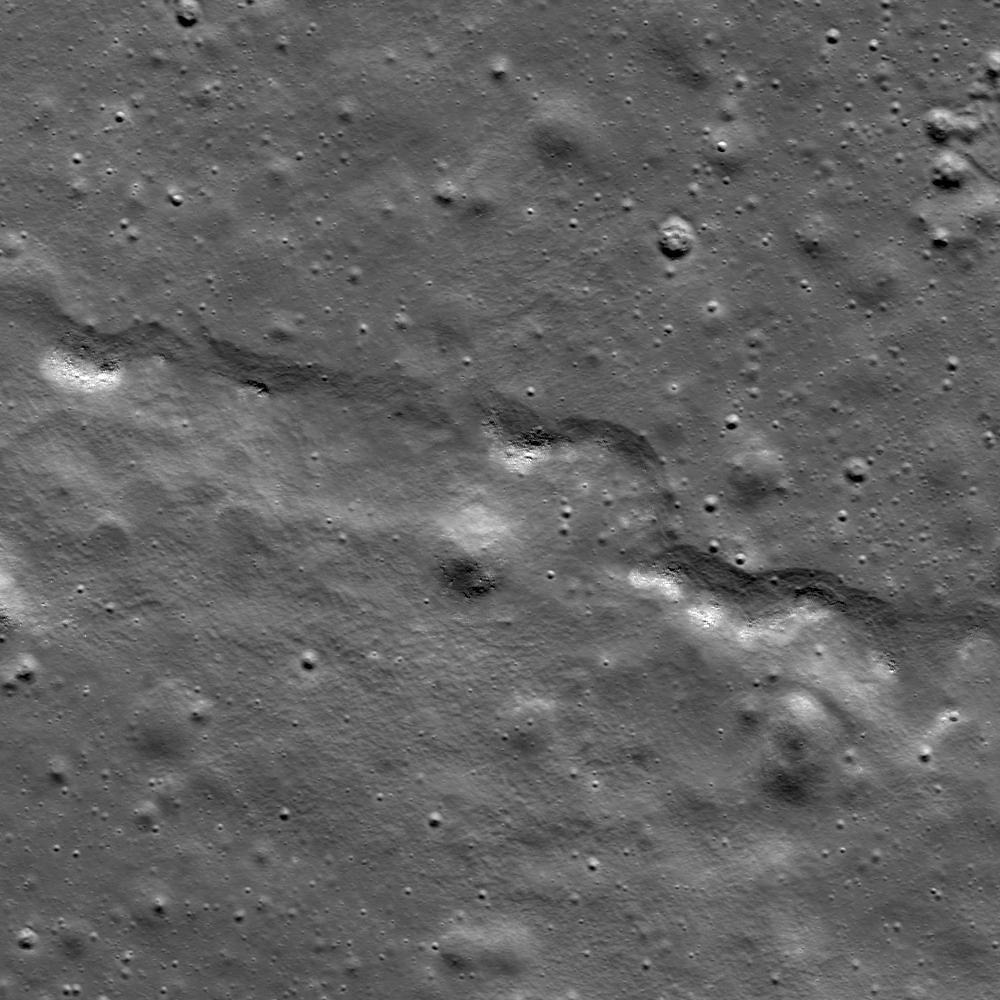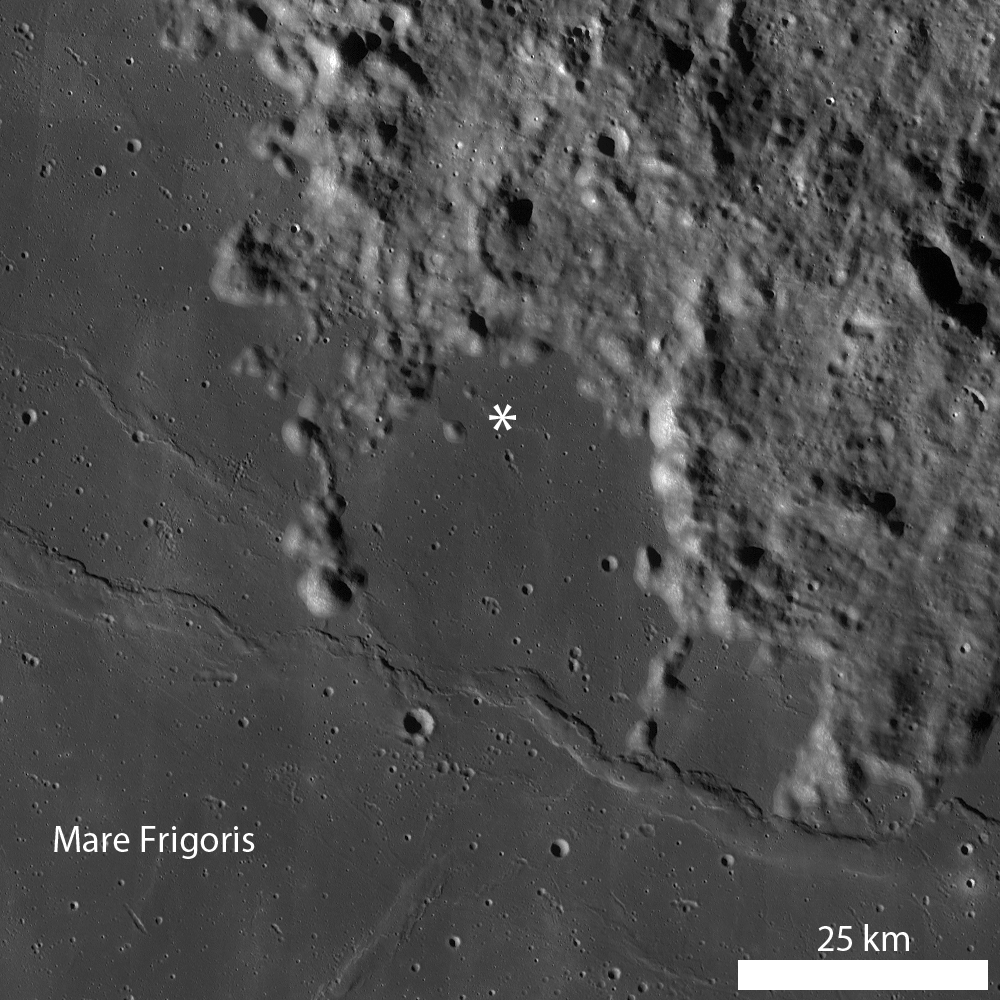
There are many wrinkle ridges throughout the lunar mare. These fascinating ridges are formed when contractional strain causes layers of mare basalt to fracture, a process that deforms the surface. Sometimes the wrinkle ridges are very sinuous and curvy, and other times wrinkle ridges are more linear and less undulatory.
Today's Featured Image highlights a curvy wrinkle ridge in Mare Frigoris (61.492°N, 350.108°E) that is morphologically similar to other wrinkle ridges in this mare, yet today's wrinkle ridge is much smaller than many of the other wrinkle ridges in this region (see WAC context below). Like other wrinkle ridges in the mare, there are some portions of the wrinkle ridge that are covered with boulders and are slightly higher-reflectance than the remaining portion of the wrinkle ridge. Current understanding is that because the wrinkle ridge has a broad rise and a central steeper-sloped ridge, the steepest-sloped portions of the ridge crest fracture and begin to disaggregate and erode before the remainder of the wrinkle ridge.
Why, compared to other wrinkle ridges in this region, is today's wrinkle ridge so small? Consider the location of the wrinkle ridge in the WAC context image (above). The wrinkle ridge formed within the basalts infilling an old crater and is less than 10 km from the mare-highland boundary. It is possible that the mare-fill is thinner in this area, which would affect the degree to which the basalt could fault. This hypothesis is supported by the presence of several nearby kipukas, which were not covered by the embaying lava and probably affected the contractional strain in this area.
Further support for this hypothesis comes from observations of small wrinkle ridges in some mare-flooded craters that have much less basalt volumes than the flooded nearside basins. However, scientists have not yet identified all the wrinkle ridges in the mare, so it may be that many small wrinkle ridges are widespread that simply were unresolvable in older lunar images! Such an occurrence would make sense, especially when considering the range in sizes of lunar lobate scarps discovered by LROC1!
Do you see any evidence of kipukas affecting wrinkle ridge formation in the full LROC NAC image?
1For two recent publications, please refer to:
Watters, T. R. et al., Evidence of Recent Thrust Faulting on the Moon Revealed by the Lunar Reconnaissance Orbiter Camera, Science, 329, 936-940, 2010.
Banks, M. E. et al., Morphometric analysis of small-scale lobate scarps on the Moon using data from the Lunar Reconnaissance Orbiter, Jrnl. Geophys. Res., 117, E00H11, 2012.
Related Posts:
Boulders in the Sea of Serenity
Tectonics in Mare Frigoris
Forked wrinkle ridge
Wrinkle ridge in Oceanus Procellarum
Relative age relationships
Published by Lillian Ostrach on 15 January 2013
